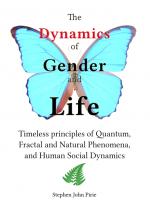Posted 23 September, 2016, 3.10pm
[Note: "About" (The Belief Doctor) was posted on the previous 'beliefdoctor.com' website and is reposted here, for consistency of links.]
My focus and passion as The Belief Doctor?1 is in analysing and improving 'bodies of belief' in all fields of human experience including science, religion, business, management, politics, new-age, health ... life.
I do so by a number of robust, effective means.
But in all my approaches, I apply one overarching rule that will stand the test of time, in all circumstances — that of accepting, and affirming the irreducible paradox of life of part and whole, of individual and community, of "trees and forests."
An example. Recently I was asked what did I think about Buddhism. Without going into too much detail, we need only review the beliefs of Buddhists, from that paradoxical perspective (using the reciprocal test).
Let's take a specific example: that of the ideal of non-attachment. Achieving non-attachment can only be gained by being attached (to some degree) with that outcome. If we're not attached to, or in some way consciously creating or desiring that outcome (of non-attachment) then we would have absolutely no (as in zero) conscious choice, volition or free will in achieving that outcome. We would be "pure" victims to some process or spiritual force that was in control of us. That might suit some, but it's hardly a prescription for effective living.
In the context of the "Paradox Rule", the goal of achieving non-attachment is an oxymoron. It's basically a waste of time (pun intended).
Another (parallel) approach is to work more effectively with time, from a forward-focused creating approach -- primarily, by focusing on what we want, and "letting go" what we don't want.
It is our addictions to the past that causes continual recurrence of old habits, ailments and problems. Fortunately the creative process enables us to move beyond old habits to gain (or regain) health and wellbeing. That is not to suggest we avoid, ignore or deny the past -- the past serves as a platform of stability and order that is crucial to life.
 The art and science of health and wellbeing lies in balancing both past and future ... of balancing both
The art and science of health and wellbeing lies in balancing both past and future ... of balancing both
- routine and creativity
- stability and surprise
- possible and actual
- knowledge and imagination
- logic and precognition2
- individuality and community
- one and all
- finite and infinite
- physical and "pre-physical"3
Most typically we benefit from the engagement of paradox by combining "masculine-rational" and "feminine-intuitive" energies in one coherent approach to life - all of which is based on the acclaimed Theory of One and All4 and can be applied to all areas of life, including
- business development, management and innovation
- health & wellbeing
- relationships
- creativity, inquiry, understanding
Looking forward ...
Stephen Pirie
The Belief Doctor
[More background information on The Belief Doctor (Stephen Pirie) is available on the Belief Institute website.]
- 1. The Belief Doctor is a Registered Trademark of Stephen Pirie and ProCreative Pty Ltd.
- 2. see footnote ... (below)
- 3. There is now ample evidence that the wave-fuction of quantum theory reveals the pre-physical potentials and possibilities coming our way. Precognition simply taps ubiquitous nonlocal signaling and resources that are, in part, fueled by those potentials and probabilities.
- 4. More on this dynamic approach to life is explained in The Belief Doctor's Approach
